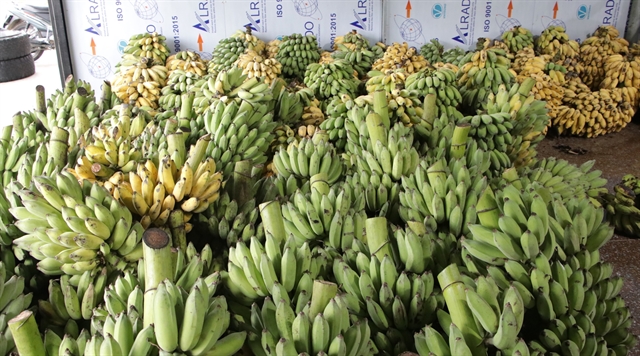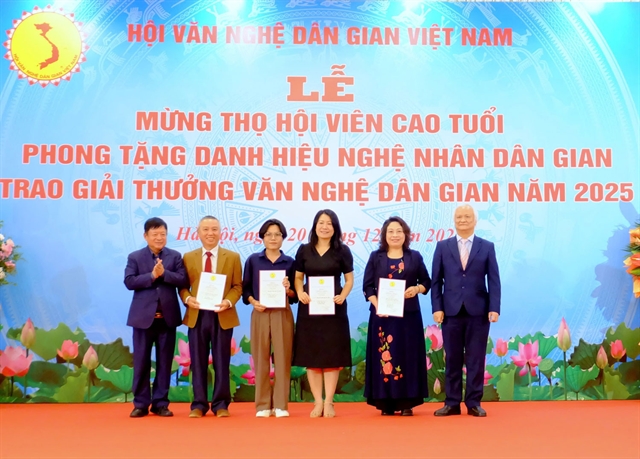 Society
Society
.jpg)
 |
| Siamese banana bunches purchased by the Sơn Bua Agricultural Forestry Production and Trading Services Cooperative. - VNA Photo |
QUẢNG NGÃI - Siamese banana farmers in mountainous Sơn Tây District of Quảng Ngãi Province are benefiting from high selling prices and a stable market, helping them escape poverty.
This has prompted many farmers to expand their banana cultivation areas, with some even adopting scientific and technical methods to boost productivity and quality.
Previously, bananas were not considered a key crop and were largely ignored by Sơn Tây farmers due to fluctuating market conditions and low prices.
However, since early 2024, nearly all the bananas in this area have been bought by the Sơn Bua Agricultural Forestry Production and Trading Services Cooperative in the district for processing into various products like banana wine, dried bananas, banana vinegar and banana syrup.
Lê Thị Ánh, director of the cooperative, said that Sơn Tây is known as an ideal location for banana farming, but it has faced challenges due to a lack of buyers.
To address this, their cooperative invested nearly VNĐ5 billion to set up a banana processing plant.
Initially, the factory did not buy many bananas from the locals during its trial period, but after its operation stabilised, it has been buying around five tonnes every day on average.
Siamese banana trees are easy to grow, require low investment, and need minimal care.
They can be harvested nine to 12 months after planting, with each bunch having five to eight hands of bananas. Therefore, harvesting is quick and frequent.
Đinh Thị Thúy, a banana farmer, said that locals used to grow bananas primarily for family use, selling any surplus at markets or to traders for around VNĐ8,000 to 10,000 per hand.
“Now, with a direct buyer, everyone has started converting less productive crops to bananas. My family has converted nearly 1,000 square meters of cassava land to Siamese bananas,” Thuy said.
To ensure a stable supply of raw materials, the cooperative has been planning banana production and guiding organic agricultural practices for each banana growing household since 2023.
Đinh Tiết, a resident in Sơn Bua commune, said that with the cooperative’s guidance, he started an organic banana farming model. He received instructions on using leaves for composting, watering, and proper harvest timing to ensure quality.
The banana processing plant has also created well paying jobs for about 10 local workers.
Phạm Hồng Khuyến, head of the Agriculture and Rural Development Department of Sơn Tây district, said that Sơn Tây district has about 100 hectares of bananas spread across all communes, so having a local processing plant opens new development opportunities for banana cultivation.
Since the local processing plant has been established, all local bananas have been purchased by the cooperative.
Sơn Tây district also supports the cooperative in obtaining a three-star OCOP certification for banana products.
The district is also planning large-scale banana farming areas in Sơn Bua and Sơn Liên communes to ensure a stable supply of the plant and increase incomes for locals. - VNS
.jpg)



